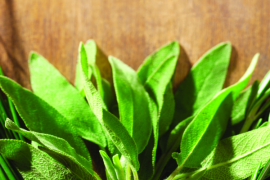By Bill Turner
Need to get a little spice in your life? No, I’m not talking about what you think I’m talking about, I’m referring to real spices — the kind we should be using more frequently in the kitchen.
SPICES AND GROWTH OF WESTERN CIVILIZATION
Some would say that the story of the spice trade is the story of Western civilization. Spices were in high demand in Greek and Roman days, but they were very expensive. Everyone had to sail across the Mediterranean to Alexandria, Egypt, to get goods from the East, which came to the region via the Red Sea. Cleopatra controlled Egypt, but more importantly, she controlled trade. The source of spices was a big mystery; one the Egyptians weren’t divulging, plus the Romans were happy trading with the Egyptians. It was always a fun trip to visit Cleopatra.
Fast forward through the Dark Ages to about 1200. The Ottoman Turks now controlled all of the Middle East from Egypt to Turkey and Constantinople. After fighting with the Christians and especially the Venetians, the Ottomans negotiated a treaty in 1268 making Venice the exclusive agent for spices, silks and all things from the East. For the next 250 years, Venice became a very wealthy city, and for that reason we have its beautiful buildings that still stand today. But by the late 1400s, the Spanish and Portuguese had had enough of the Venetians and decided to look for a sea route to the East. The Dutch and British joined in, and by the late 1500s, trade was in new hands and the Italians were left on the sidelines, while the newcomers established empires abroad. And all of this because of spices.
THE BASIC SPICE SET
Here are spices that you should always have on hand. No need to complain about the long list — if you are going to get involved, you have to do it right.
Dry spices:
- Bay Leaves
- Caraway Seeds
- Cayenne Pepper
- Cinnamon
- Cumin (Ground)
- Cumin Seeds
- Coriander
- Garlic Powder
- Ginger
- Herbes de Provence
- Marjoram
- Nutmeg
- Onion Powder
- Oregano
- Paprika – Sweet or Hungarian
- Paprika – Spanish Smoked (Pimenton)
- Red Pepper Flakes
- Rosemary
- Saffron
- Tarragon
- Thyme
- Turmeric
Try to grow the following spices or buy fresh at the market as needed:
- Basil
- Chives
- Cilantro
- Dill
- Marjoram
- Oregano
- Parsley
- Rosemary
- Sage
- Thyme
Sounds like a lot and at $5 per bottle, it adds up to about $150. But it is worth it.
THE FIVE SPICE COMMANDMENTS
- Get Fresh Spices When You Can: Certain spices are much better fresh. Try to grow your own spices in the summer. Plant on Memorial Day and they will all do well. Have dry in reserve for winter cooking or buy fresh at the supermarket.
- Throw Your Ground Spices Out If They Are Over Three Years Old: After three years, the characteristics of dry ground spices degenerate. Put a piece of masking tape on the lid and mark the date of purchase. If you find you haven’t used a spice in three years and have to discard it, hang your head in shame.
- Get Seeds Rather Than Ground Spices If Possible: Seeds last much longer — usually up to five years. Invest in a small hand spice grinder (about $10 on Amazon) and grind what you need for a specific recipe.
- Keep Your Spices In View In the Kitchen: Alternately, keep a different five on the counter each week. If you don’t see them, you will be less likely to use them.
- Experiment and Take Some Risks: Spices are not going to kill you or make you sick, so take some chances. A few caraway seeds in a soup or stew or even on a sandwich might surprise you. Nutmeg can go into almost anything. Roasted veggies with cumin and turmeric are a delight. Be bold!
Note: All organic compounds oxidize once exposed to the air. The oxidation process breaks down the very complex organic compounds found in spices. Once oxidized, the spice loses much of its flavor, smell and beneficial health effects. Seeds protect the spice from oxidation.
WHERE TO GET YOUR SPICES
It’s hard to go wrong with the great selection of spices you’ll find at local supermarkets. Penzey’s, a Wisconsin-based company, is an excellent purveyor of high-quality spices as well. You can buy their spices online at Penzeys.com.
COMMON SPICE BLENDS AND RUBS
Chili powder, curry powder and herbes de Provence are really blends of spices. The same holds true with taco seasoning and Cajun and barbecue dry rubs. With the assortment of spices listed on the previous page, you can make most of these spice mixtures at home. Purchase 4 oz. Ball jars from the hardware store (a dozen costs about $12) to store the spice mixtures. Put a strip of masking tape on the lid, and label and date each one.
The most important blends to make are chili powder and curry powder. Chili powder is especially important since it is the basis of many other spice mixtures. There are a thousand variations of these basic blends. Start with the recipes below and then experiment. The ingredients will nicely fill 4 oz. Ball jars.
Chili Powder:
• 1⁄4 cup Hungarian paprika
• 2 tsp. Spanish smoked paprika (pimenton) • 1 Tbsp. garlic powder
• 1 Tbsp. onion powder
• 1 Tbsp. dried oregano
• 1 Tbsp. ground cumin
• 1⁄2 tsp. cayenne pepper
The cayenne pepper is the hottest thing in your spice drawer with a Scoville heat rating of 30,000-50,000. By comparison, most paprikas found in America have a Scoville rating of about 1,000. With a minor change in the cayenne, you can dramatically change the heat of chili powder. Chili powder purchased in the store is usually very bland.
Curry Powder:
- 2 Tbsp. ground coriander
- 1 Tbsp. cumin
- 1 Tbsp. turmeric
- 1 tsp. ground black pepper
- 1 tsp. ground ginger
- 1⁄2 tsp. cayenne pepper
This is the basic recipe. Again, you can control the heat with the cayenne. Some recipes add combinations of ground mustard, cardamon, cloves and nutmeg. As long as you have the basic ingredients above, you can experiment to your heart’s content.
OTHER SPICE MIXTURES
Starting with chili powder, which is your go-to ingredient, you can easily make a number of other seasonings.
Taco Seasoning:
- 4 Tbsp chili powder
- 1 Tbsp. cumin
- 2 tsp. sea salt
- 1 tsp. ground pepper
- 1⁄2 tsp. cayenne (adjust to taste)
We call this taco seasoning, but it is also works in chili con carne, nachos or any Mexican dish. Use it to liven up rice; add 1 tsp. per cup of rice when cooking.
GIVE DRY RUBS A TRY
It’s springtime, so when you’re firing up the grill you’ll need some tasty rubs for your favorite meat dish. Here are a couple to try:
Barbecue Dry Rub:
- 4 Tbsp. chili powder
- 1 Tbsp. sea salt
- 1 Tbsp. ground pepper
Cajun Dry Rub:
- 4 Tbsp. chili powder
- 1 Tbsp. thyme
- 2 tsp. sea salt
- 2 tsp. black pepper
- 1⁄2 tsp. cayenne pepper (adjust to taste)
FIVE EASY WAYS TO GET STARTED ON YOUR SPICE JOURNEY
- Make an omelet with a sprinkling of herbes de Provence. You’ll be surprised by the taste.
- Season cauliflower florets with 1 Tbsp. of cumin, a dash of salt and pepper, and a drizzle of olive oil. Roast in the oven at 400 degrees for 15 minutes.
- Throw some caraway seeds in everything from salads to soups to stews.
- Heat 2 Tbsp. olive oil with 1⁄2 tsp. red pepper flakes and 1 Tbsp. chopped garlic. Sauté 1 lb. of shrimp. Serve with crusty bread.
- Season 2 cups of almonds with 2 tsp. smoked paprika and olive oil. Pan roast and stir over medium heat for 10 minutes.
SPICES KILL THE BUGS
Most spices, especially onion, garlic, cumin, turmeric and coriander, have strong antimicrobial properties. Most Indian meals include curry, which is a mixture of all of these spices. And according to studies by food microbiologists at Cornell University, these spices have been shown to “inhibit 75 to 100% of the bacteria species against which they’ve been tested.”
Cilantro, the leafy plant that produces coriander seeds, kills salmonella better than antibiotics, according to scientists at the University of California, Berkeley. Cilantro is used in just about every dish in Mexico. Spices are essential in warm climates, such as in India and Mexico, where germs and microbes grow more quickly.





